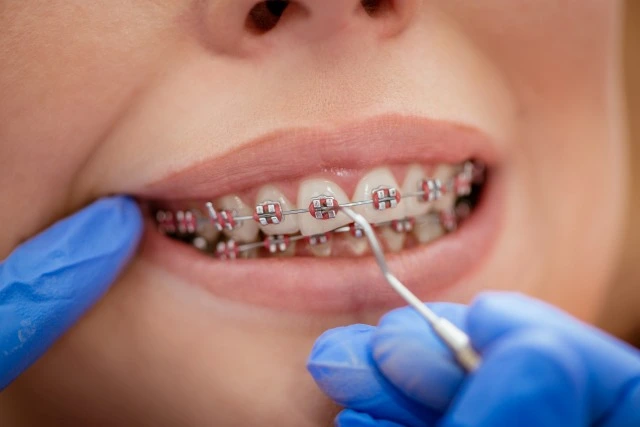When it comes to your child’s dental health, it’s essential to stay informed about their developmental needs. One of the most common concerns parents face is whether their child may need braces. Braces can be a significant step in ensuring your child’s teeth and jaw develop properly, so understanding the signs early on can help you make an informed decision. In this guide, we will explore the signs that may indicate your child needs braces and offer dental advice today to help you take the next steps in their orthodontic care.
Signs Your Child May Need Braces
Braces are typically recommended for children when their teeth or jaw are misaligned, which can affect their bite, speech, and overall oral health. There are several tell-tale signs that may suggest your child could benefit from braces. Here are the most common signs to watch for:
1. Crowded or Overlapping Teeth
One of the most obvious signs that your child may need braces is if their teeth are crowded or overlap. When teeth don’t have enough room to grow properly, they can become crooked or misaligned. Crowded teeth can also lead to difficulties with cleaning and maintaining oral hygiene, making them more prone to cavities and gum disease.
2. Gaps Between Teeth
While some gaps between teeth are normal, especially for children, larger gaps can indicate a need for orthodontic intervention. A significant space between teeth, particularly in the upper or lower jaw, may affect your child’s bite and the way their teeth fit together.
3. Bite Issues (Overbite or Underbite)
If your child’s upper teeth protrude beyond their lower teeth or vice versa, this may indicate a problem with their bite. An overbite (when the upper teeth overlap the lower teeth too much) or an underbite (when the lower teeth protrude beyond the upper teeth) can lead to difficulty chewing and speech problems. These conditions are often treated with braces.
4. Teeth Growing in the Wrong Direction
Teeth that are growing in a direction other than straight can be a clear indication that your child may need braces. If you notice that their teeth are coming in at an angle or overlapping in unusual ways, it’s a good idea to seek advice from a dentist or orthodontist.
5. Early or Late Loss of Baby Teeth
Typically, children lose their baby teeth between the ages of six and twelve. If your child is losing their baby teeth too early or too late, it can cause issues with the alignment of their permanent teeth. Early loss of baby teeth can result in teeth shifting before the permanent teeth are ready to come in, while late loss can cause crowding problems when the adult teeth eventually emerge.
6. Difficulty Chewing or Biting
If your child experiences pain or discomfort when chewing or biting, it could be a sign that their teeth or jaw are misaligned. This issue may be corrected with braces to ensure that their bite is more functional and comfortable.
The Importance of Seeking Dental Advice Today
If you notice any of the signs mentioned above, it’s crucial to seek professional dental advice today. Early intervention can help address misalignments before they worsen, making treatment faster and more effective. Orthodontic treatment can not only improve the appearance of your child’s smile but also ensure their teeth are healthier in the long term. Waiting too long may require more extensive and costly treatments.
When Should You See an Orthodontist?
It’s recommended that children have their first orthodontic evaluation by the age of seven. At this age, their baby teeth are still in place, and the first permanent molars have usually erupted. This allows the orthodontist to assess the child’s bite and the development of their jaw and teeth. Early evaluations can help identify potential issues before they become more severe, making it easier to plan for future treatment.
What to Expect During an Orthodontic Evaluation
During the initial consultation, the orthodontist will examine your child’s teeth, jaw, and bite. They may take X-rays and impressions to get a better look at the alignment of their teeth. This will help the orthodontist determine whether your child needs braces or if other treatments are necessary. Based on their findings, the orthodontist will recommend an appropriate treatment plan, which may include traditional braces, clear aligners, or other orthodontic appliances.
The Different Types of Braces
If your child does need braces, there are several types of orthodontic treatments available. Each has its advantages and may be more suitable depending on your child’s needs and preferences. Here’s a breakdown of the most common types of braces:
1. Metal Braces
Traditional metal braces are the most common and affordable type of braces. They consist of metal brackets attached to the teeth, connected by a metal wire. These braces are highly effective in correcting most orthodontic issues and are suitable for children of all ages.
2. Ceramic Braces
Ceramic braces work similarly to metal braces but are less noticeable. They use clear or tooth-colored brackets, making them a more discreet option. While they are less visible, they can be more prone to staining and may require more maintenance than metal braces.
3. Clear Aligners
Clear aligners, such as Invisalign, are a popular choice for older children and teens. These aligners are removable, which makes them more convenient for eating and cleaning teeth. They are also virtually invisible, providing a discreet way to straighten teeth. However, clear aligners may not be suitable for more complex orthodontic issues.
4. Lingual Braces
Lingual braces are similar to traditional metal braces, but they are placed on the back of the teeth, making them less visible. Lingual braces can be a good option for children who are self-conscious about wearing braces but still need the effectiveness of traditional orthodontic treatment.
The Benefits of Early Orthodontic Treatment
Early treatment can offer several advantages, especially when addressing misaligned bites or jaw growth issues. Here are some of the key benefits of starting orthodontic treatment early:
1. Prevents Future Dental Problems
Addressing orthodontic issues early can help prevent more severe problems in the future. By guiding the growth of the teeth and jaw, early treatment can reduce the risk of tooth decay, gum disease, and more complex alignment issues.
2. Improves Oral Health
Braces can help improve your child’s oral hygiene by aligning the teeth properly. Straighter teeth are easier to clean and maintain, reducing the likelihood of plaque buildup, cavities, and gum disease.
3. Boosts Self-Esteem
Many children and teenagers feel self-conscious about their appearance when they have crooked or misaligned teeth. Braces can significantly improve their smile and self-confidence, which can have a positive impact on their overall well-being.
4. Shorter Treatment Time
In some cases, starting treatment early can lead to shorter overall treatment times. Early intervention can help prevent the need for more extensive treatment later on, making the process quicker and less invasive.
Conclusion
Determining if your child needs braces is a critical step in ensuring their oral health. By recognizing the signs early on, you can help your child avoid more significant dental problems in the future. Whether your child is dealing with crowded teeth, bite issues, or misaligned teeth, seeking dental advice today is the best way to ensure they receive the appropriate care. Remember, the earlier you address these issues, the better the outcome. Consult with an orthodontist to get a comprehensive evaluation and learn about the best treatment options for your child.



